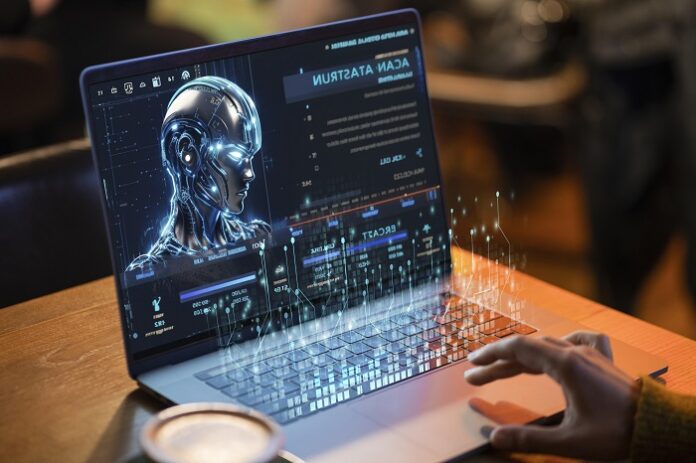Artificial Intelligence (AI) refers to systems that do specified tasks by evaluating the environment and making intelligent decisions. Most AIs are entirely software-based and operate in the virtual world, but there are those that are embedded on hardware systems. Regardless of their form, their outputs are usually pretty accurate, and that’s why they’re used across many industries.
One of the leading sectors where AI comes in handy is in online gaming. Casino sites use its complex algorithms for game testing, enhancing VR technology through realistic avatars, and using chatbots for customer support. Not only that, but bettors also benefit from this technology by using it to uncover trends and gain insight into some games, helping them make more informed decisions.
But like all good things, AI does come with its disadvantages. One major downside to these systems is the use of deepfakes, which make telling what’s real or not more challenging. Luckily, there are steps you can take to identify these malicious technologies and deal with them.
How Deepfakes Can Affect the Online Gambling Landscape
Deepfake technology uses AI to produce realistic videos and images, often allowing people to use other people’s likeness as their own. Though it has the potential for legitimate use, in the context of online gaming, it can cause some serious harm.
1. Threat of Identity Fraud
One concerning use of deepfakes in casino sites is identity fraud, especially during verification using image identification or live video chats. Deepfakes can allow users to bypass this process by impersonating others and masking their identities. As a result, this opens up a plethora of issues, including potential for underage gambling and allowing one player to use multiple accounts.
2. Cheating in the Live Casino
Live dealer games are increasingly becoming a favorite for many players, mostly because of the realistic touch they offer. But what happens when that aspect gets taken away? With deepfakes crafty players could potentially manipulate their video feed to confuse the dealers or other players, gaining an unfair advantage and causing serious breaches of fair play policies.
3. Spreading Misinformation Through False Promotions
Another significant way deepfakes could disrupt online casino gaming is when they are used to create convincing yet fraudulent promotions. Imagine seeing tons of images or videos of your favorite celebrities celebrating big wins or endorsing a casino site. If the content happens to be a deepfake, unsuspecting gamers could fall into the trap causing them to play on illegal sites.
Spotting and Avoiding Deepfakes
Because deepfakes are so disturbingly realistic, it’s crucial to know how to spot them so as to avoid falling prey to misinformation or breaking any casino rules.
1. Look out for odd details
Always ensure you analyze the details of an image and look out for inconsistencies when something feels off. Altered images or videos lack realistic lighting, and often, specific details like the hands or toes are often digitally mangled. Backgrounds are another giveaway, as people often forget to include key details that you’d expect, or they could just appear distorted.
2. Using Technology for Deepfake Detection
Thankfully, the same technology that goes into creating deepfakes also works in detecting them. Currently, there are numerous AI-powered algorithms that you can use to identify even the most subtle discrepancies in deepfake videos and images. These systems analyze aspects such as facial movements, shadows, and lighting, which aren’t always perfectly replicated by deepfakes.
3. Unnatural Movements and Sound Effects
While there are several ways to spot deepfake images, deepfake videos often share two main features, that is, unnatural eye movements and out of sync audio. In 2019, a video circulated of Donald Trump denouncing his impeachment and saying Epstein didn’t kill himself, and people could clearly see his mouth movements didn’t match the sound. That’s just one of the many examples where deepfake has been used and spotted, and it goes to show that with keen observation, you can tell the difference between real and fake.
Practical Ways of Dealing with DeepFakes Going Forward
As deepfakes continue to infiltrate various facets of digital media, lawmakers are making efforts to stay up to date with the technology. In 2023, the European Union (EU) proposed an AI Act that attempts to regulate them by requiring creators to disclose that their content is AI generated or manipulated. Another relevant legal framework is the General Data Protection Regulation (GDPR), which requires informed consent of the person depicted in a deepfake.
Gaming sites, on the other hand, have taken to raising awareness and educating players about deepfakes and its potential misuse in online gambling. As such, players are becoming more vigilant and skeptical about too-good-to-be-true promotions and unusual footage during live games.
Though Deepfakes are Harmful, There is Hope
As we continue to enjoy the digital revolution in the gaming industry, deepfakes present numerous threats that we cannot ignore. These include increasing the potential for identity theft, manipulating live games video feeds, and dissemination of misinformation through false promotions. The good thing is, by leveraging advanced technology, enforcing relevant legislation, and raising player awareness, there is hope for mounting a strong defense against deepfake technology.
Image by Freepik





